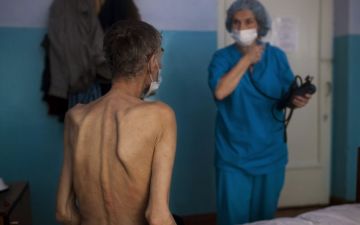Tuberculosis is a disease both preventable and curable. Nevertheless, it is estimated that more than 4,500 people across the globe die from the disease every day, with the numbers disproportionately high in the developing world. Multidrug-resistant (MDR-TB) strains of the disease, which are more difficult and expensive to treat, represent a huge threat moving forward as they can have mortality rates above 50 percent. Moldova has one of the highest rates of MDR-TB in the world.
It is estimated that one out of every ten patients in Moldova defaults on his TB treatment and that nearly 44 percent of all cases of TB in the country are multidrug-resistant. This development is largely due to the deterioration of the country's health infrastructure after the break-up of the Soviet Union. The country's Ministry of Health estimates that the number of people dying from TB has quadrupled since 1994. In spite of these numbers, the problem is still not being adequately addressed.
Moldova's TB incidence rate is now 15 times higher than its more developed neighbors in Western Europe; this is a tragic case study in the disease's ability to overtake a country's fledgling health care system, and of how a population can literally begin to die when it is not protected from this entirely treatable disease. What Moldova is currently going through represents the threat that all countries could face if the fight against TB is not successful.
Updated August 26, 2010.




